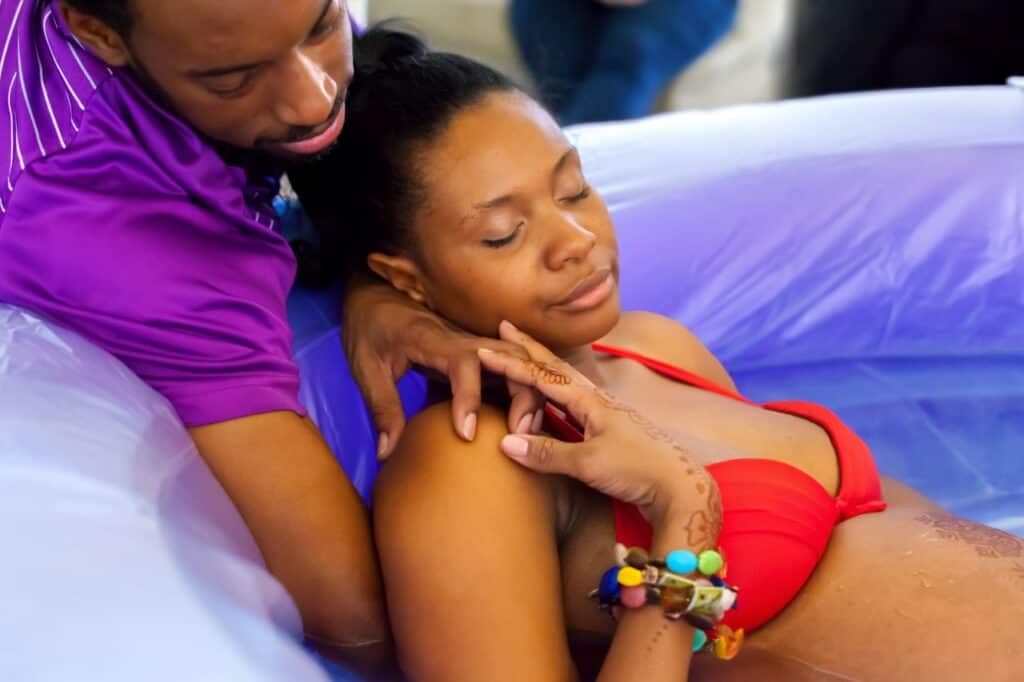Stages of Labor
FROM EARLY LABOR SIGNS TO MEETING YOUR BABY
Knowing the different stages of labor can help prepare expectant parents for the arrival of their baby and provide them with an understanding of what to expect during childbirth.
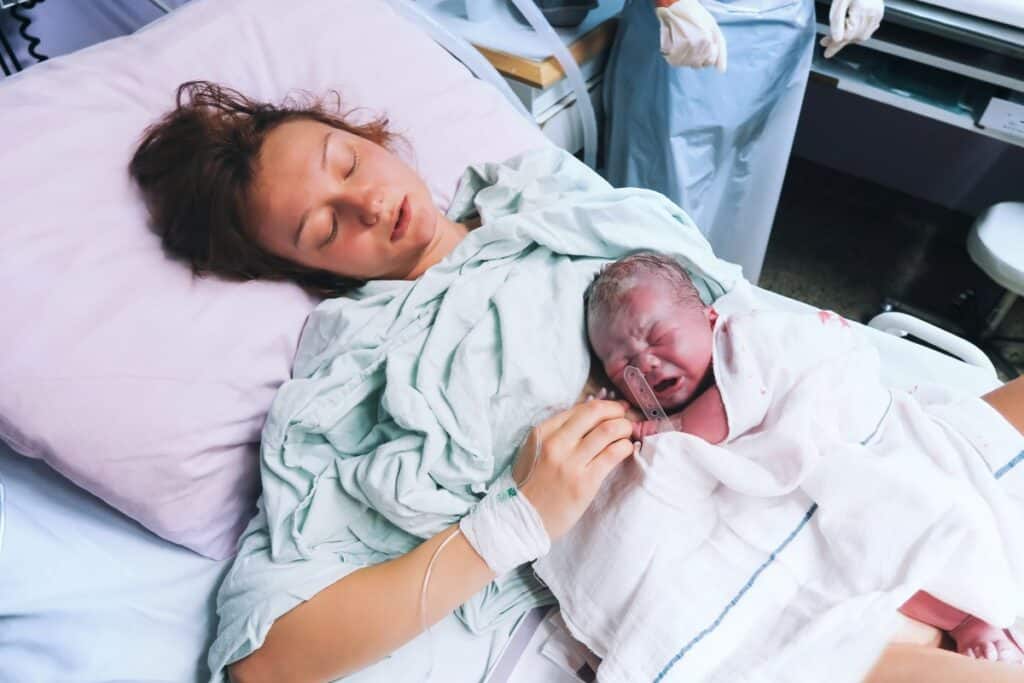
Stage 1
The 1st stage of labor is the longest, and it is split into 3 separate phases. During this time, your cervix will slowly efface & dilate as uterine contractions increase in frequency and intensity. As you move through labor, you might notice the quality of your contractions change or these separate phases might just blend together in one big labor experience. Your body is working really hard to get the cervix to completely thin & open so you can move into the next stage.
This is a brief overview of how bodies may move through labor. Each section addresses what the uterus is doing with contractions & cervical change as well comfort ideas. Remember that each labor is unique, and everyone’s truth in labor is different. |

Prelabor: weeks
A pregnant body has a cascade of hormonal and physical changes as it nears labor. All of this is in preparation for the upcoming birth and you may notice some signs days or weeks leading up to it.
- Practice Contractions: uterine contractions are a tightening of the muscle so you may notice your belly getting hard periodically. They are usually painless, come and go with no rhythm and DO NOT get longer, stronger & closer together.
- Baby dropping: your baby is now sitting deeper in the pelvis which puts more pressure on your pelvic floor and bladder; you may notice an increase in urination frequency and a noticeable pregnancy swag when you walk now.
- Cervical changes: your cervix has to get ripe before it can progress in labor. This is achieved through an increase in prostaglandin production and a softer cervix can release your mucous plug because it cannot hold onto it tightly anymore. Look for changes in your underwear or when you go to the bathroom: a mucousy or watery discharge, blood tinged discharge or even a little bit of a formed mucous plug.
- Loose bowel movements or diarrhea: increasing levels of prostaglandins (those awesome cervical ripening hormones) can be the cause, and it also makes more space for your baby to descend as it cleans out your rectum and makes more space in the pelvic floor.
- Restless back pain: a low, nagging pain, sometimes different from postural pain during pregnancy. It may feel hard to get comfort or relief no matter what you do.
- Intense nesting urge: a sudden burst of energy & need to finalize the baby’s living space, try not to exhaust yourself!

Prodromal (Warm Up) Labor: 1-3 days
Prodromal labor = periods of contractions that start & stop, basically think of it as a warm up labor. Previously called false labor, some bodies need a little more warm up time, and that is ok. It can feel confusing and exhausting if you are in this phase through.
Contractions:
- May grow in intensity.
- The periods of contractions can be regular, often at night when melatonin is higher but the pattern eventually stops again.
- They are not Braxton-Hicks contractions.
Cervix:
- May cause cervical change: remember the more elastic & thinner the cervix, the easier it can open.
Comfort:
- A long warm up phase can feel long and exhausting.
- Rest, hydration, warm baths and very purposeful ignoring may help you move through into a more active phase of labor.
- Therapeutic rest = hospital inducing sleep for you so you can garner some energy for the active phase of labor.
- Labor circuits may help your baby move into a better position for birth & facilitate labor progression.
Early Labor: 8-12+ hours
This earlier stage of labor is usually the longest & mildest for most people.
Contractions:
- 5-20 minutes apart
- Less than 60 seconds long
Cervix:
- Thinning/effacing: measured in percentages of 0-100%. The thinner the cervix, the easier it opens/dilates.
- 0-6 cm Dilated (assessed by a vaginal exam from your Healthcare Provider)
Comfort:
- Carry on with some normal activities. I like to think of early labor as a lazy Sunday afternoon with your partner: napping, cuddling, binge watching shows, walking (slowly) to your favorite local lunch spot. Leisurely productive!
- Rest smart: stay in bed if labor begins at night time (which many do) and spend lots of time taking breaks throughout the day.
- Ignore your contractions as long as you can. If they don’t demand your full focus, don’t give it; there will be plenty of time for that in the stages to come.
- Distract yourself with final birth preparations: birth bag packed and in the car + a properly installed infant car seat + gas.
- Distract yourself with something enjoyable. Netflix & Chill or maybe just the Netflix part.
- Batch cook: make a large batch of food and freeze it so you can come home to a few postpartum meals which is priceless.
- Fuel up: Eat light & hydrate with birth friendly foods for energy and lots of clear fluids with electrolytes. This includes partners; good labor support requires strength & stamina.
- Only call birth attendants or helpful family that will be supporting you during labor or supporting your household by taking care of dogs/siblings.

Active Labor: 4-6 hours
Active is a good description of this phase of labor. As contractions get longer, stronger & closer together, finding your flow with your breath, body & support partner will ground you and help you cope.
Contractions:
- 3-5 minutes apart
- 60 seconds long
Cervix:
- 6-8 cm (vaginal exam by provider)
Comfort:
- Move rhythmically with upright, forward, open positions (UFO’s) to relieve discomfort & aid fetal movements.
- Breathe deeply with slow inhales through your nose and long exhales through the mouth – it will ground you, bring your working uterus oxygen, oxygenate your baby, relax your pelvic floor, find a rhythm when working with your contractions, trigger your relaxation response & release tension from your body. Yes, just slow breathing!
- Find your flow: find the positions, breathing patterns, visualizations, massage techniques and partner supports that work best for you and then keep doing them. Keep in mind these might change as labor changes.
- Love the break: rest, hydrate, meditate, get a massage, pray, empty your bladder, update your family, laugh with your partner, just don’t think about the last contraction or the next contraction, enjoy this small reprieve.
- Partner Support: your labor partners are critical by helping you find your flow, encouraging breathing, physical & emotional support, advocating for your needs, helping you hydrate, helping you empty your bladder from all the hydrating and anything else that supports you.
- Your amniotic sacs may rupture from the downward pressure of your baby + squeezing of contractions. It could be a small trickle or a larger gush. Removing the cushion from under the baby’s head lets them settle deeper onto the cervix and many people feel an intense shift in contractions.
- If you are not birthing at home, active labor is when most people are advised to head to their birth place. Your provider might want you to monitor for a contraction pattern like a 5-1-1 or a 4-1-2 if you are timing. You might just notice that you cannot walk or talk through contractions in conjunction with a contraction pattern that is growing longer, stronger & closer together. (Yes, those are very important markers.)
- FYI: This might be the time when your partner’s jokes cease to be funny!
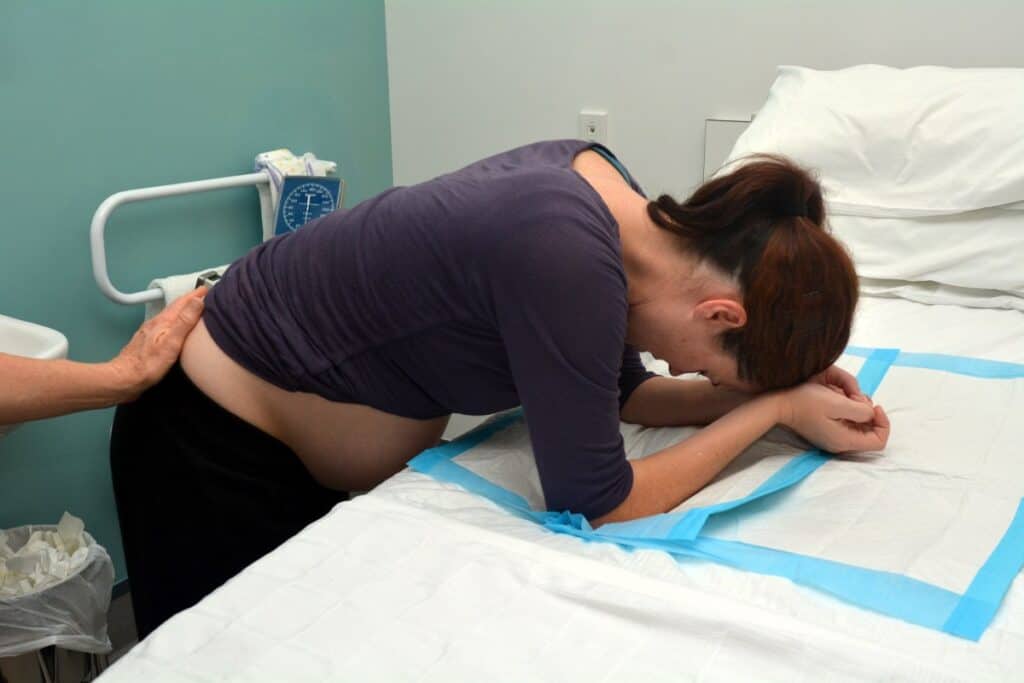
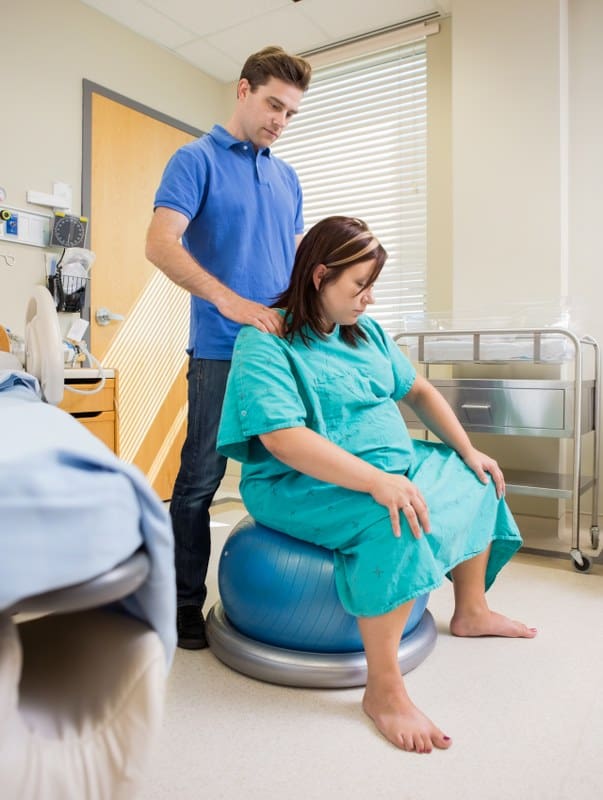
Transition: 30 minutes - 2 hours
If you have ever seen a movie birth, this is usually the stage they love to depict. While this phase is intense because of longer contractions with shorter intervals, mother nature was pretty kind when she made it the shortest phase of labor. She also concocted a complex cocktail of hormones pulsing from your brain throughout your body to reduce stress & pain and increase feelings of euphoria.
Contractions:
- 1-3 minutes apart (yep, you read that right!)
- 60-90 seconds long
Cervix: 8-10ish cm
- Complete = cervix is completely thin & open.
- Cervixes don’t always dilate symmetrically.
- Every cervix doesn’t have to reach 10cm, it just needs to be complete.
Comfort:
- Find your flow and stay there.
- Labor cocktail of Oxytocin + Endorphins take the edge off the pain but also make you a little altered and euphoric.
- Normal markers of transition: shaking, hot, vomiting.
- Some people turn outward and depend heavily on support partners & some people turn inward and really rely heavily on themselves.
- May hit the wall: it is common to feel so exhausted and overwhelmed that you just want to quit.
- Amniotic sacs may rupture if they haven’t already, but your bags of waters don’t have to break for your baby to arrive.
Stage 2
After your cervix is completely done thinning & opening, you move into the 2nd Stage of Labor, known by many names; Expulsion, Descent, Pushing or Releasing. Whatever you prefer to call it, your cervix is out of the way and now your baby can move down into your birth canal. This stage can also technically be split into 3 phases, but the time frame is much shorter.
Rest & Be Thankful Phase
Seriously, rest & be thankful that your uterus is taking a small break after that 1st stage of labor. Many people notice that their contractions stop for a brief period of time. Don’t panic, just rest, fortify yourself and wait for your baby and your body to resume labor when they are ready.
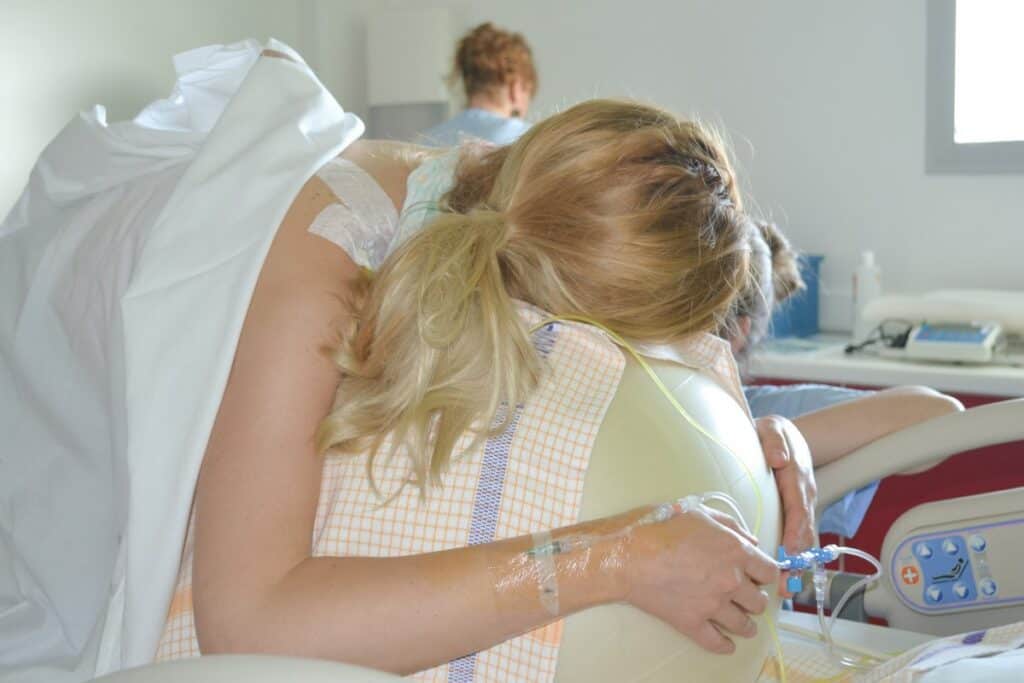
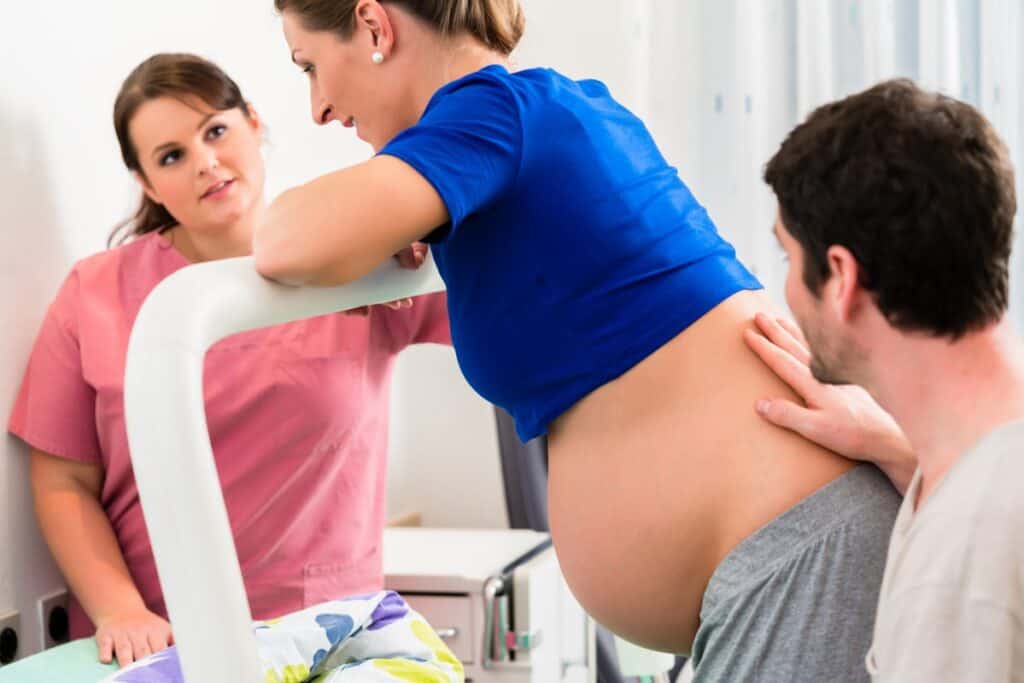
Descent: 30 minutes - 3+ hours
Your baby has navigated your bony pelvis, you have moved your cervix out of the way, and now your uterus is going to push them down and out. The upper uterus is the powerhouse of labor. It is perfectly capable of pushing your baby out, and all it needs from you is to relax your pelvic floor and allow your baby to come through.
Contractions:
- About Every 5 Minutes
- Your Uterus Pushes Your Baby Out
- You Can Assist By Finding Optimal Positions
- Knees In, Toes Out
- Engaging Transverse Abdominals + Releasing Pelvic Floor
Cervix: Completely dilated
Comfort:
- Breathing, grunting, groaning and sounding can all feel good and relax your pelvic floor. Relaxed jaw = relaxed pelvic floor.
- Use positions that open the pelvic outlet & allow for sacrum mobility to widen your baby’s escape hatch.
- Stay hydrated!
- Cool rags on the forehead, neck or chest can cool you down when overheated.
- Physical support from partners any where you need it, usually with legs and back.
Birth
During descent, your baby will move down the birth canal, but when you take a break, they slip back up slightly. Think of it like a 2 step; 2 steps forward, 1 step back.
When they are on the perineum and crowning is imminent, they won’t slip back anymore.
As they begin to crown, their head is passing from inside of you to outside of you. Warm compresses on the perineum increase circulation and allows for stretching which can decrease tearing and assist birth.
During crowning, the perineum has to stretch to allow your baby out. The “ring of fire” is a term used to describe a burning sensation as your baby crowns.
You are about to meet your baby.

Stage 3
The placental stage is also called the “afterbirth” for obvious reasons. You’re not done until the placenta follows their baby down the birth canal.
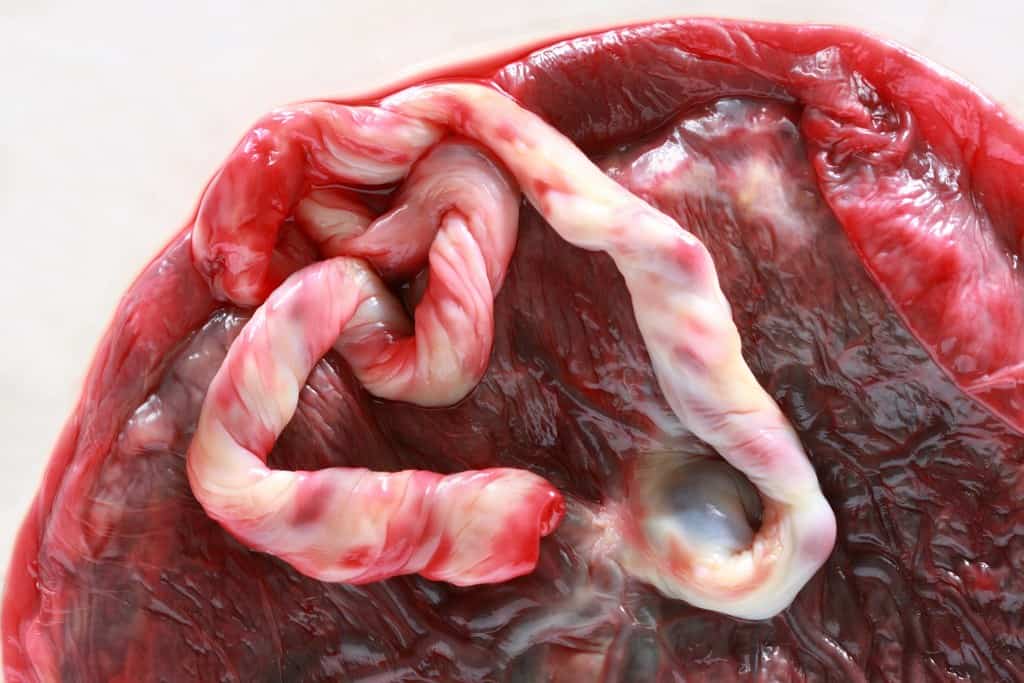
Placental Stage: within 1 hour
Contractions: Mild cramping or heaviness in vagina
Comfort:
- Release of the placenta is not painful.
- Fundal massage by the staff to assist in the release is usually uncomfortable though. Deep breathing & relaxation techniques are still useful.
- When your baby is placed skin to skin, they have their own massage technique to help your placenta release from the uterine wall by stepping on your uterus.
- Snuggling releases Oxytocin to clamp down your uterus and prevent excess bleeding.
- Usually, just a small push when directed by your healthcare provider, and they will help guide it out with the cord attached to it.
- Birth team will examine it, but it is yours to take home if you have after birth plans for your own afterbirth.
Stage 4
The Golden Hour
The first hour after birth
The special time immediately after birth for uninterrupted bonding is considered the “golden hour”. The goal is to minimize distractions, visitors and procedures to everyone involved. Unless your baby needs extra assistance, this is a great meet and greet time.
Contractions:
1. Afterbirth pains: mild contractions the first few days post birth to help the uterus shrink.
2. May feel them more intensely if breastfeeding due to the oxytocin release.
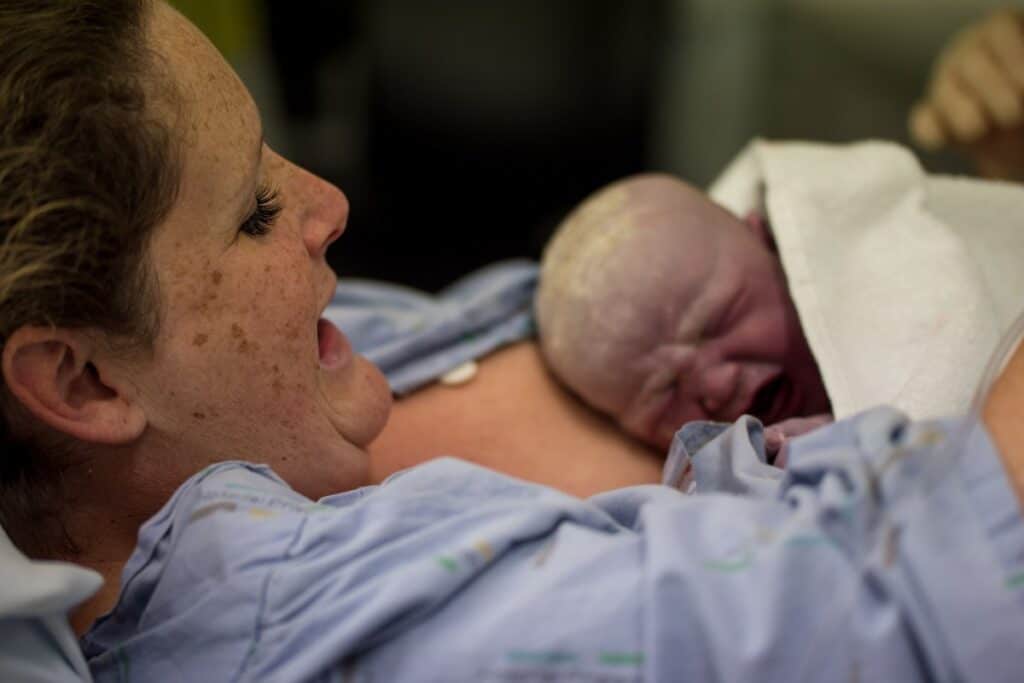

Comfort:
- NO baby procedures is ideal: no weighing, measuring, bathing, swaddling, vaccines, tests or other procedures unless absolutely necessary.
- APGAR score: quick well baby check that your team will do to assess your baby at birth; doesn’t require they ever leave your arms.
- Snuggling, skin to skin, resting and marveling at your baby are all normal. So is feeling like you don’t quite know this new stranger yet.
- Your baby has a set of inborn movements they will use to scoot up to your nipple and begin to suckle aka the “breast crawl”.
- Any interventions interfere with their reflexive need to seek out milk.
- Your provider may still be doing repair work to your perineum, and your nurses may still be bustling around, tending to you, but you stay in your baby bubble.

